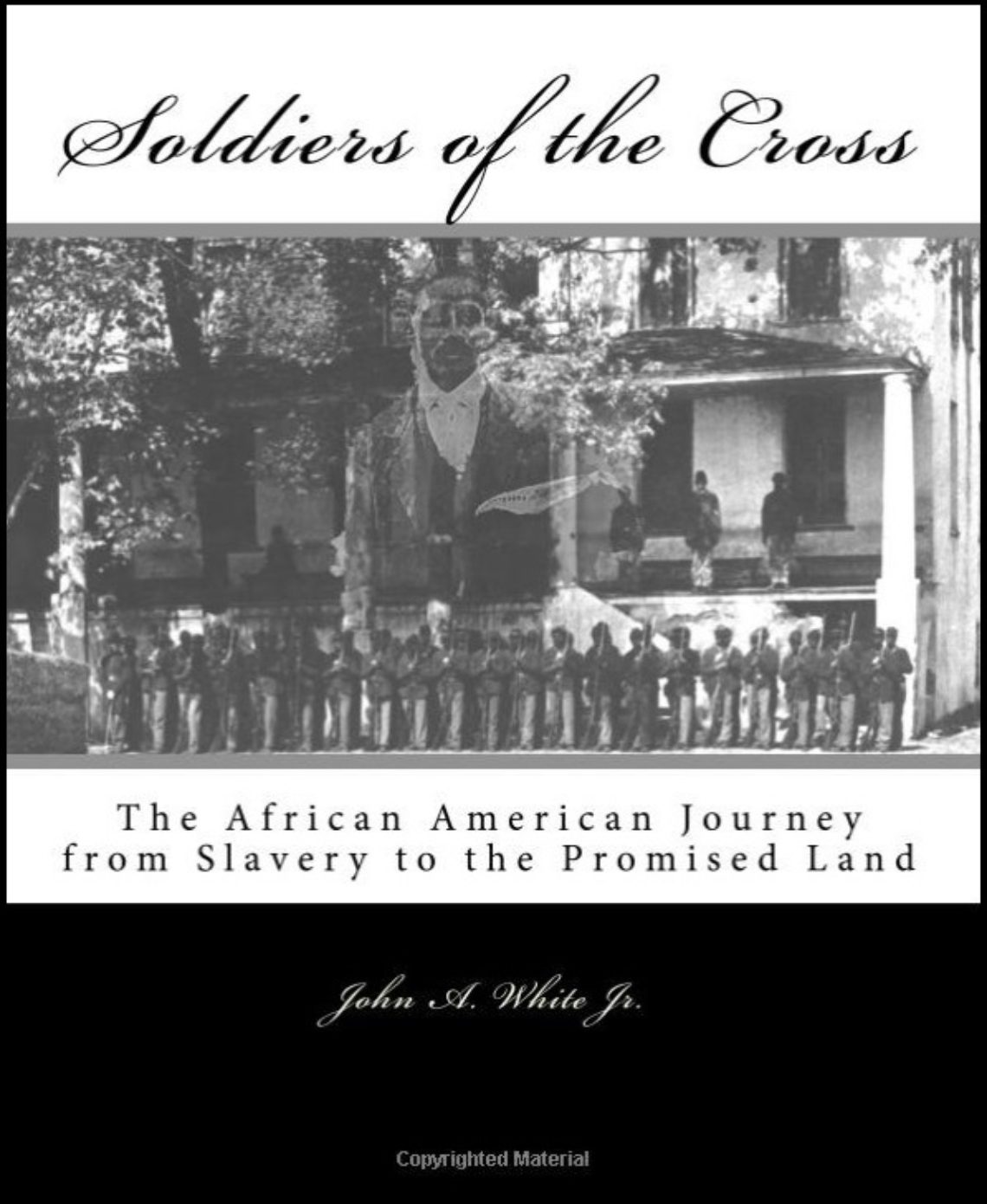John A. White Jr. was a research engineer and Civil War re-enactor for over twenty years. His passion for research expanded beyond his engineering career to African American history and he founded the Gospel Army Black History Group. He used his technical research skills to develop a perspective of African American slave liberation that represents the perspective of contemporary African American’s, former slaves and abolitionist. In the words of a former slave, “If you want Negro History, you will have to get it from somebody who wore the shoe.” Primary historical sources such as the slave narratives, the works of William Wells Brown, periodicals, letters, memoirs and paintings are used to uncover lost history. White argues that American History that does not fully include the actions taken by African Americans to win their own freedom is incomplete and has an adverse effect on African American identity. The power of God and prayer were the only powers possessed by slaves. The Invisible Steal-away to Jesus Prayer Movement was illegal in the South with penalty of flogging but the movement inspired the abolitionists and ignited the Civil War. When the opportunity was available for liberated blacks to fight for freedom, Colored Troops had a significant impact on the Union victory. Black troops demonstrated a willingness and ability to capture deadly confederate fortifications which helped President Lincoln win reelection over an anti-emancipation opponent. People that are commonly viewed as victims are redefined by John White as victors.
Illustrations

Cover: Authors great grandfather Rev. Charlie White and the First South Carolina Volunteers at Hilton Head, South Carolina
The Gospel Army Black History Group
Nhoma Village Bushmen and the Author
Top: “Horrible Massacre” (Washington Republican, Salem, Indiana, Friday, May 21, 1847, and Carroll County Democrat (Maryland), April 29, 1847 and Slave Ship Shackles
Bottom: Slave Shackles and Collar
1908 German map of Africa
Dark Artillery, Frank Leslie’s Illustrated, October 5, 1861
The Storming of Fort Wagner,-Lithograph by Louis Kurz and Alexander Allison, 1890
Top: The Bloodhound Business, Library of Congress
Bottom: Slave hiding in a tree, trapped by armed whites on horseback; dogs surrounding tree, Library of Congress
Top: The Front of a Slave Auction House in New Orleans Before the Auction, Harper’s Weekly, Jan. 24, 1863, p. 61. These slaves were probably house servants. Field slaves were sold in the trading yard across the river.
Bottom: Marker on New Orleans building indicates that it was once a Slave Exchange Contraband Camp at City Point, depicting an evening prayer meeting
Bibb describes this scene of family praying, being whipped then auctioned
“Contraband Camp at City Point” depicting an evening prayer meeting
Eastman Johnson, The Lord is My Shepherd, 1863 (Smithsonian American Art Museum)
New York Herald, Saturday, January 28, 1804 and Civil War CDV of Gordon (slave) at the Baton Rouge Union camp during his medical examination, National Portrait Gallery, Smithsonian Institution, March 1863
Amy Was Hung in March 1865 For Saying, “Bless The Lord The Yankees Have Come” Harper’s Weekly September 30, 1865
Top: The Last Moments of John Brown, by Thomas Hovenden, 1884 (Library of Congress) and New York Daily Tribune, December 5, 1859
Bottom: The Tragic Prelude, John Brown, by John Steuart Curry (Courtesy Kansas State Historical Society)
John Brown’s John Brown’s Original Marching Song, Duke University Libraries, Digital Collection’s
Louisiana Native Guard, Authors Collection
Free, Statue by Emma Cadwallader-Guild,1880s, Courtesy Crystal Bridges Museum
Top: First South Carolina Colored Volunteers, from a sketch by Colonel Brewerton (Author’s Collection)
Bottom: Captioned “The War in South Carolina—a Negro regiment attacked by rebels and bloodhounds—from a sketch by our special artist, W. T. Crane,” (Frank Leslie’s Illustrated, March 5, 1864)
Men of Color! To Arms! To Arms! (Philadelphia 1863), Library of Congress
“A Negro Regiment in Action,” Harper’s Weekly, March 14, 1863
Top: Battle of Port Hudson (Library of Congress) Bottom: Funeral of Capt. Andre Cailloux in New Orleans, July 29, 1863, from the August 29, 1863 edition of Harpers Weekly
Battle of Milliken’s Bend Battle of Milliken’s Bend ( Frank Leslie’s ‘The Negro in The War’)
“Colored troops under General Wild, Liberating slaves in North Carolina.”
The Fort Pillow Massacre, Louis Kurz and Alexander Allison, Chicago, Illinois
The war in Virginia – the 22nd Colored Regiment, Duncan’s brigade, carrying the first line of Rebel works before Petersburg
Top: Abatis at Petersburg in 1865. (Library of Congress)
Bottom: “The Colored Infantry Bringing in the Captured Guns, amid the Cheers of the Ohio Troops,” Frank Leslie’s Illustrated, July 9, 1864
Battle of the Crater (Author’s Collection)
Top: Polley’s description of Confederate positions guarding Richmond Virginia at New Market Heights, September 29, 1864, Burk & McFetridge, environs of Richmond
Bottom: Redoubt and Signal Station on Cobb’s Hill, Va.
Company E, Fourth US Colored Infantry, Ft. Lincoln, defenses of Washington (Library of Congress)
Butler Medal, engraving in Butler’s Book and Medal from Authors Collection, Fleetwood’s Medal of Honor, Smithsonian Institution
Battle of Nashville by Louis Kurz and Alexander Allison, 1893
The First Mississippi Cavalry Bringing into Vicksburg Rebel Prisoners Captured at Haines Bluff,” Frank Leslie’s Illustrated, December 19, 1863
The Federal Army Entering Richmond VA. April 03rd 1865, Frank LESLIES 1895 BOOK HISTORY OF THE CIVIL WAR 2pics
Black Troops Entering Charleston, Harper’s Weekly, March 18, 1865
Jane Richards Bunn’s Bible
1860 Slave Schedule: Elkins Township Arkansas
1870 Clark County Arkansas Census
Clara White and charley My Great Grand Father Rev. Charley White, 1867-1934, holding his Bible.
The Jubilee Singers (The American Experience, PBS Online)
Wikipedia, Battle of Chaffin’s Farm









































